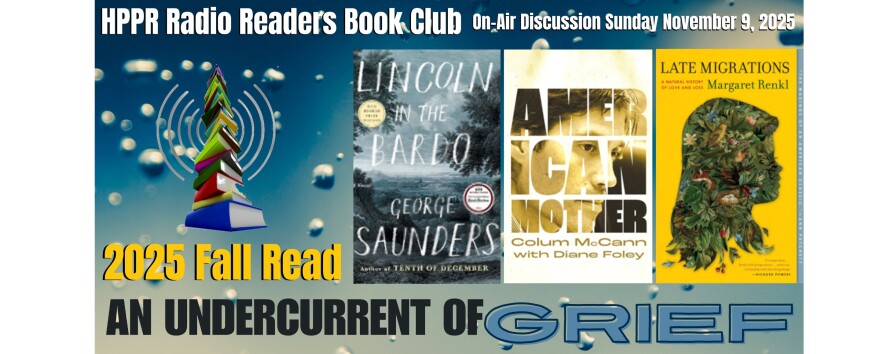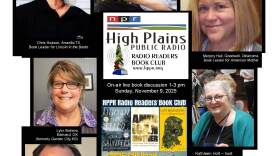This is Mike Strong, in Hays, for HPPR. The book is “The Cellist of Sarajevo” by Stephen Galloway.
Stephen Galloway’s take off on the Vaso Miskin massacre in Sarajevo on the 27th of May 1992 is not about the worst of the massacres and killings in the Bosnian war. In number of casualties, it is relatively small. Tens of thousands were killed. In Srebrenica, in July 1995, between the 11th and 22cnd, a closely estimated 8,372 Bosniak men and boys, and several dozen women and girls, were murdered.
But it is doubtful the size of the massacre makes for a popular book. The concept of a cellist, playing in the location of a massacre, honoring the dead with a separate small concert for each person, gives the book the hook to draw readers. I note, the book is really an examination of existence and resistance, not an examination of the massacre as such.
In looking up support material I chanced on an inconsistency in the time of day for the attack and the number of victims. There is the nearly canonical version of 4 pm, 22 dead and at least 70 wounded which is repeated almost endlessly.
Bosnian web sources were my first clue that something was different. Before long I was running down morning attack times and more victims. I also ran into a Russian negotiated truce which put these particular victims in a safe spot which turned out to be a target spot. Not unlike safe corridors in Ukraine with safe convoys which were shelled.
But, back first to times. The first Bosnian material came from contemporaneous web sites. This was at the start of the expansion of the world wide web.
From Radio Sarajevo, these two paragraphs:
“The day before the massacre in Vase Miskina Street, the Russian Minister of Foreign Affairs, Andrei Kozirev, was in Sarajevo and it was agreed, among other things: a ceasefire. In accordance with this agreement, on May 27, 1992, at 6 o'clock in the morning, the truce was supposed to take effect, and the citizens of Sarajevo were "encouraged" to stand in line for bread, which was delivered to a store in Vase Miskina Street no. 5-12 delivered around 9:00 a.m., and soon dairy products were also delivered nearby.”
“While the distribution of bread was going on, at 9:55 a.m., a grenade was fired at this location.”
Neither “The Cellist of Sarajevo” nor “Echoes from the Square” gives us any information about the truce.
Note: Srebrenica was also declared a “safe” area in May 1993, a little more than two years later more than 8,000 were slaughtered by Serb soldiers.
Both books place the time of the attack in the afternoon. “The Cellist …” says 4 pm. “Echoes…” says late in the afternoon. Both state 22 dead, “The Cellist …” directly as a figure and “Echoes …” indirectly as Vedran tells the family of the violinist over a meal on the 23rd day after the shelling that he is done because this is day 23.
So, more than 30 years later, the generally listed incorrect numbers, are repeated until they become the established information. They’re wrong. More importantly they slide over the betrayal of the “truce” negotiated by Andrei Kozirev, Russia’s minister of foreign affairs.
This was just after the breakup of the Soviet Union and two and a half years before the Budapest Memorandum (5 Dec 1994) in which the US, the UK and Russia agreed to guarantee the borders of Ukraine in exchange for sending all the nuclear weapons in Ukraine to Russia. Remember, these had been based in Ukraine by the Soviets because this is a geographically forward delivery location for nuclear bombers and missiles into Europe.
Even though a truce is hardly a treaty let alone a memorandum, the Sarajevo truce experience is too close to what happened to similar agreements in Ukraine to ignore. In 2015 Russia vetoed a UN resolution declaring the Srebrenica massacre as genocide. This is history as a heads up.
This is Mike Strong, in Hays, for HPPR Radio Readers Book Club
Selected Reference (additional selections upon request):
Victims of the Srebrenica Massacre (8,372) http://war-memorial.net/Victims-of-the-Srebrenica-Massacre-4.171
Budapest Memorandum 1994 https://en.wikipedia.org/wiki/Budapest_Memorandum
The Hunted: These Are the Ukrainians Russia Wanted to Find - DECEMBER 21, 2022 Frontline, by Erika Kinetz, Solomiia Hera. One was asked to be an informant for Russia. Another’s 16-year-old son was abducted as leverage. A third is still in Russian custody. Here are just a few portraits of prominent Ukrainian politicians, journalists, pastors and more who ended up on Russian lists for abduction, in an effort to strip Ukraine of its leaders. https://www.pbs.org/wgbh/frontline/article/ukrainians-russia-wanted-to-find/
Frontline: “We Will Find You:” Russians Hunt Down Ukrainians on Lists https://www.pbs.org/wgbh/frontline/article/russians-hunt-down-ukrainians-on-lists/










